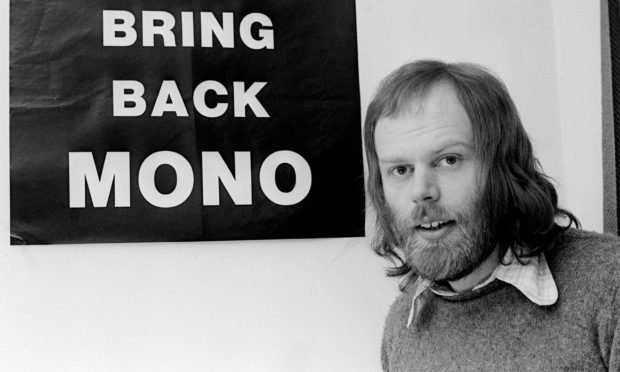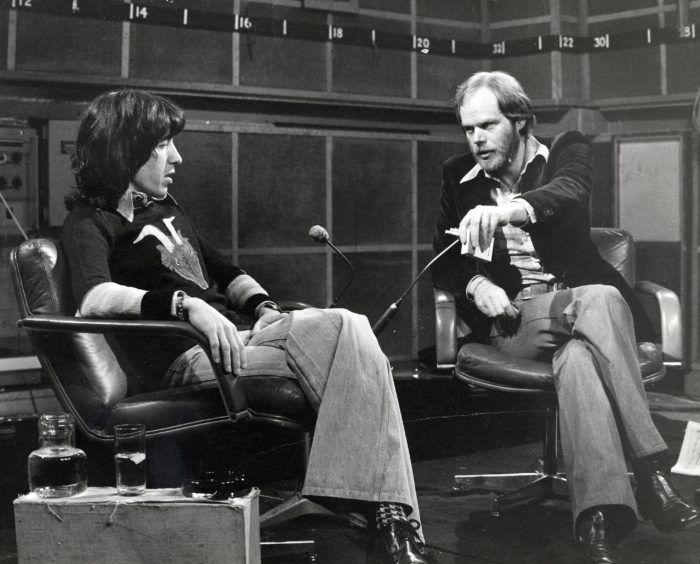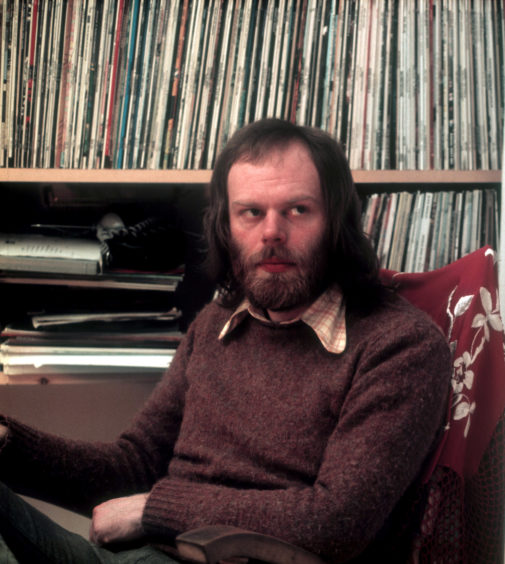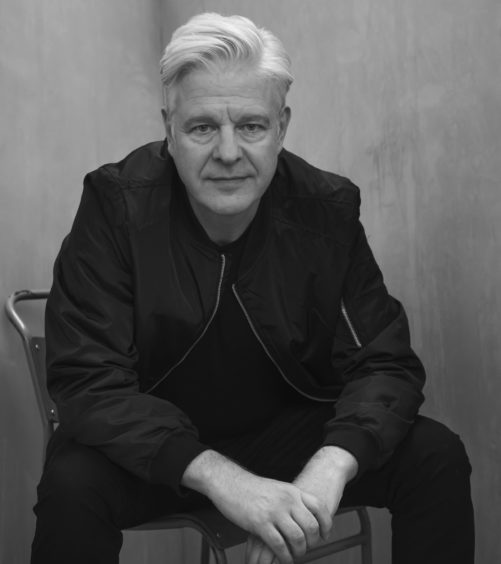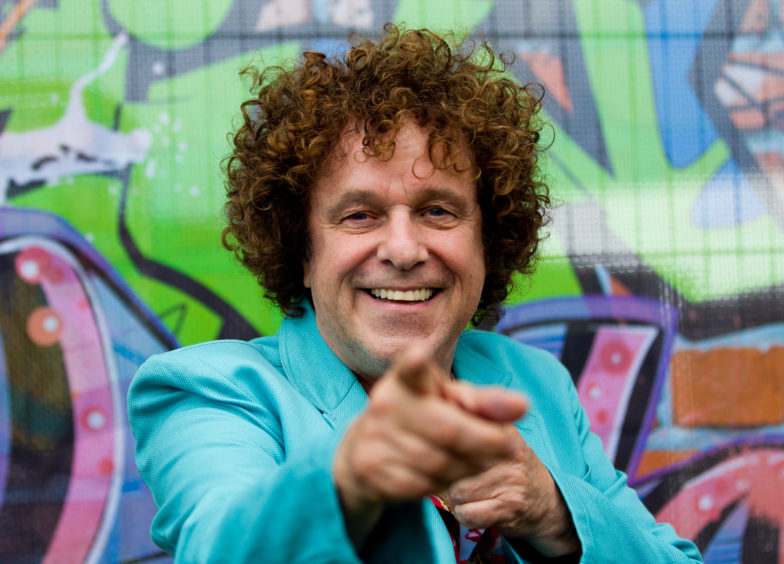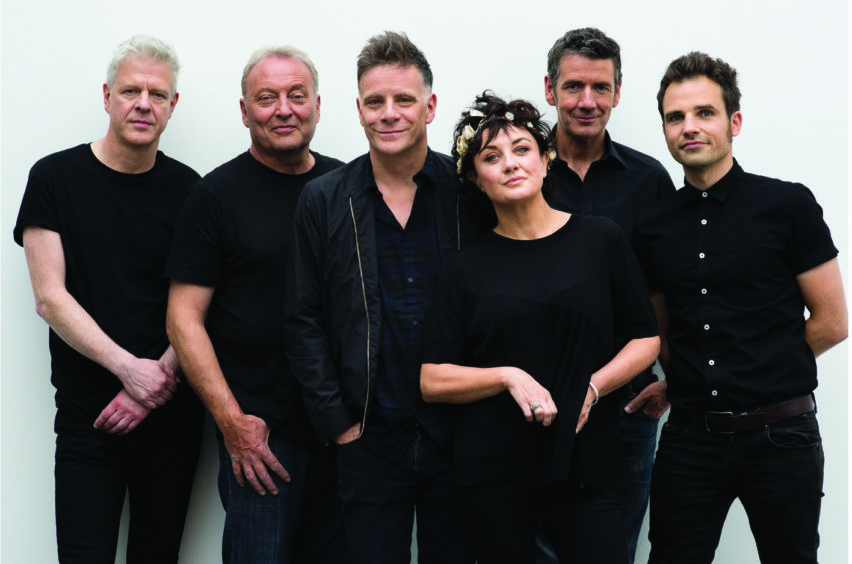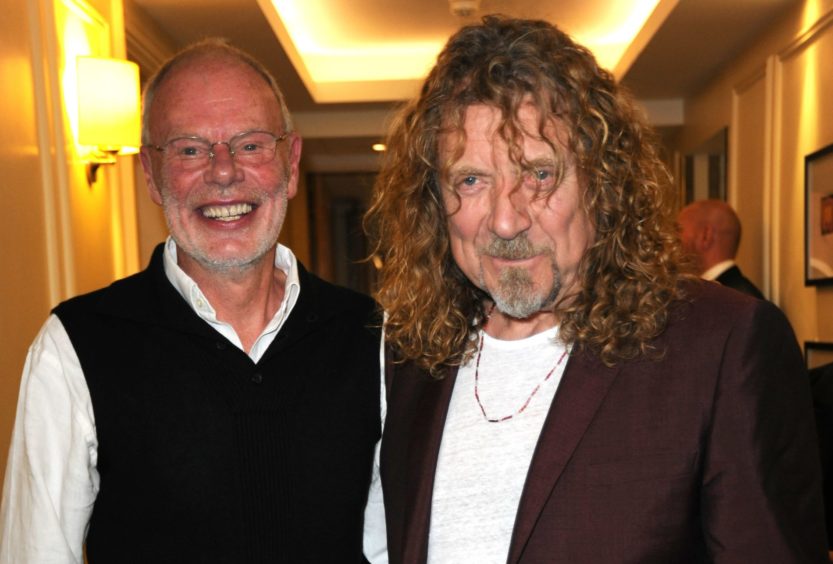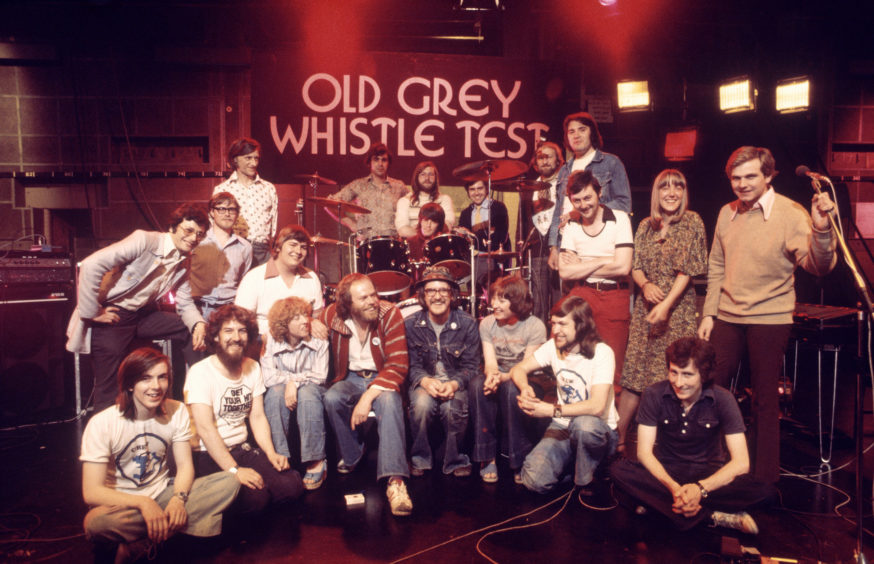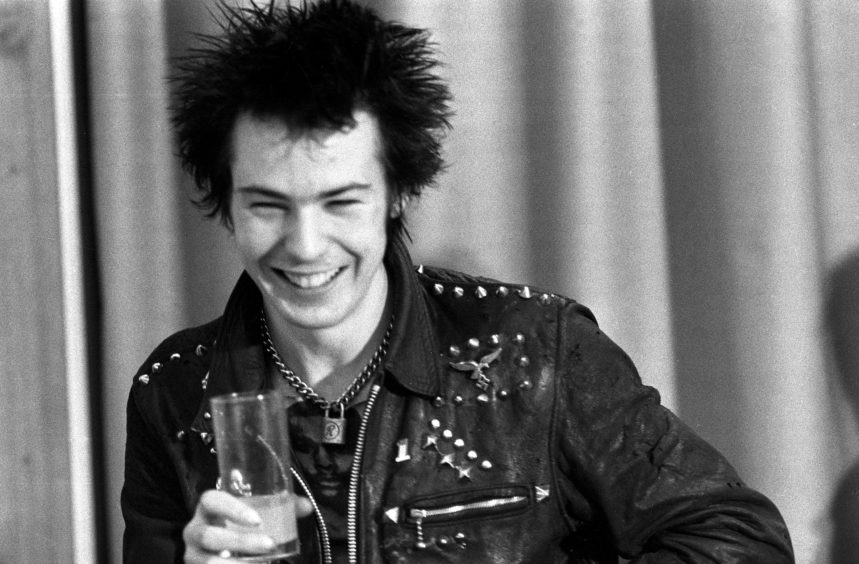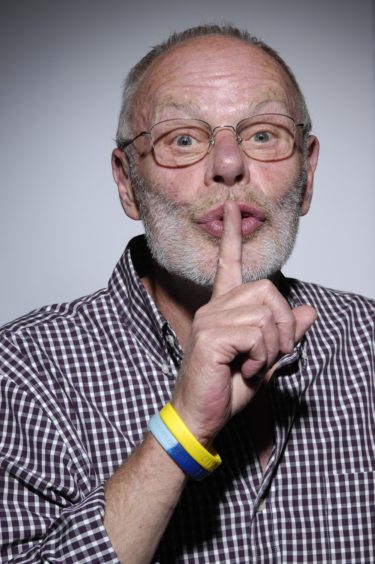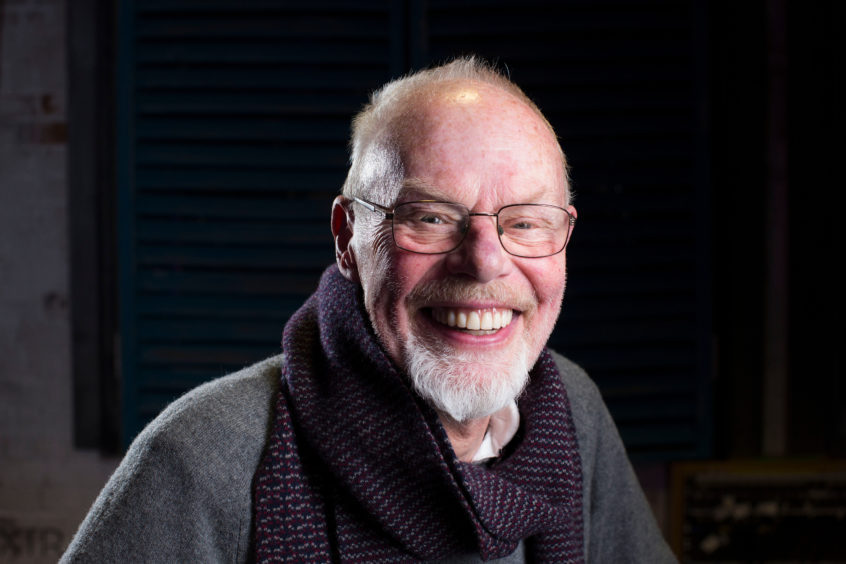Broadcasting legend Bob Harris, aka Whispering Bob, celebrates 50 years on air in 2020. Dundee-based Deacon Blue guitarist Gregor Philp is among a star-studded line-up of musicians working on a charity single to mark the half-century anniversary. Gayle Ritchie takes up the story…
With his flowing hair, hippie-style beard, chilled-out manner and softly-spoken voice, Bob Harris, aka Whispering Bob, was the face of 1970s music.
His very first broadcast on BBC Radio 1 was on August 19 1970 on Sounds of the Seventies, a show he hosted until 1975.
Two years later, in 1972, he became host of The Old Grey Whistle Test – a hugely influential rock music show.
Over the decades, Bob, now 74, became known as a legendary presenter, loved and respected by his colleagues, world-famous musicians and a loyal audience.
Constantly on the hunt for the next big thing, Bob has always championed new musicians, from Emmylou Harris and Tom Petty in the 70s through to Kacey Musgraves, and today’s rising stars such as Ward Thomas, Kelsea Ballerini and Tenille Townes.
He continues to be a household name today and his velvety voice can be heard on BBC Radio 2’s The Country Show with Bob Harris.
As Bob celebrates his 50th year in broadcasting, he decided to mark the occasion with a unique project – a charity single with funds raised for performers struggling during the coronavirus pandemic.
His idea was to get as many famous musicians on board as possible, under the banner of “Whispering Bob’s Allstars”, to perform remote versions of his favourite song – Ben E. King’s 1960 classic Stand By Me – which, coincidentally, marks the 60th anniversary of its recording on October 27 1960 next month.
Enter Dundee-based Gregor Philp, guitarist with Deacon Blue since 2008, and a singer-songwriter in his own right.
“I’ve known Bob for four years and got to know his son Miles when he was quite young,” says Gregor, 56.
“Bob’s wife Trudie rang me up and asked me to help with ‘this thing’. This turned out to be a new version of Stand by Me to mark Bob’s 50th year on air, as well as the song’s 60th anniversary.”
Music producer Miles asked Gregor to lay down the basic guide music – on bass guitar – for other top musicians to play along to.
Gregor also arranged the string section of the music, did “a bit of technical stuff”, and played some acoustic guitar on the track.
Superstar musicians on board thus far – names are being added on a daily basis – include Dire Straits frontman Mark Knopfler, Kiki Dee, Leo Sayer, John Oates, Duane Eddy, Rosanne Cash (Johnny Cash’s daughter), Paul Rodgers (of Free), PP Arnold, Peter Frampton, Mica Paris, Darius Rucker, Rick Wakeman, Richard Thompson, Beth Nielsen Chapman, Leo Sayer, The Shires, Steve Cradock of Ocean Colour Scene and Ward Thomas.
“It’s really exciting to have musicians like Duane Eddy and Mark Knopfler – an absolute legend – on board,” muses Gregor.
“They range from really well-known musicians to younger artists that Bob loves.
“Everyone recorded their versions at home and sent in their live recordings and videos.
“Miles mixed it all beautifully and is working on the final cut of the video.”
Money raised from the single goes to musicians in need via the charity Help Musicians.
The 99-year-old charity provides vital support to thousands of music creators, many of them struggling for income during the coronavirus pandemic.
“Covid has had a devastating impact on the UK music scene,” says Gregor. “Artists who rely on live performances for their income have been particularly hard hit.”
The fact so many big-name musicians are on board the project shows just how popular Bob is.
“If anyone can bring something like this together, it’s Bob – he’s an absolute legend,” says Gregor.
“He’s also an incredibly nice chap; his heart is always in the right place.
“People love him and they’re very grateful to him for helping them, playing their music and championing them along the way.”
It’s really exciting to have musicians like Duane Eddy and Mark Knopfler – an absolute legend – on board.”
The track will be released via Under The Apple Tree Records, in partnership with Absolute Label Services, on October 27.
That’s 60 years to the day since King cut the original, produced by Leiber & Stoller who co-wrote it with him. All funds for the new release are being raised via the #StandByMe Go Fund Me page.
Bob’s best bits
Since his Old Grey Whistle Test days, Bob has befriended superstars such as Marc Bolan and Robert Plant as well as partying with Black Sabbath and Alice Cooper.
He sung backing vocals with David Bowie, helped Elton John launch his career, toured America with Queen, jammed with Blondie and interviewed everyone from John Lennon to Keith Richards to Lou Reid.
Whistle Test
The Old Grey Whistle Test was a no-frills, album-oriented show with a bohemian, cardigan-wearing vibe (it favoured long-haired rockers playing indulgent guitar solos) which ran from 1971 to 1988.
It brought viewers Debbie Harry in thigh-boots, Iggy Pop on non-prescription drugs, The Who spoiling for a fight, a drunk Keith Richards and The Damned smashing up the studio.
The show’s name hailed from a song-publishing legend that if the doorman – the old grey because was wore a grey suit – could whistle your tune, then it passed the popularity test.
The programme shortened its name to Whistle Test in 1983, but five years later, in 1988, it was ditched by the BBC.
It was a blow to Bob, who describes the 80s as his “lost decade” and admits he had become the “Ken Barlow of rock” on the show, with his reluctance to embrace the shock of the new and dismissal of the likes of Roxy Music and New York Dolls with a knowing sneer.
Decades later, he admitted the error of his ways.
His negativity toward the new wave of androgyny-embracing bands, which sowed the seeds of the punk revolution, led to public abuse and his removal from both Whistle Test and Radio One.
“If you wanted to make an uncool list, of the least fashionable people of the 80s, I would be top of that list,” he stated in 2018.
“I’d become the Ken Barlow of rock.”
Punks and parody
Bob’s hippie beard, long hair and laid-back presentation style made him a favourite target for parody, most notably by Eric Idle on the 1970s BBC comedy show Rutland Weekend Television.
When punk exploded in Britain in the mid-70s, Bob became a hate figure for the anti-establishment rockers.
He was attacked by punks in a nightclub in 1977 as a pal was slashed with a broken bottle by the Sex Pistols’ Sid Vicious.
In his 2015 autobiography Still Whispering After All These Years, Bob explains: “I was the identikit picture of everything the punk generation despised – a 30-year-old, white, middle class son of a policeman, the long-haired, bearded, ex-hippy, stadium rock-loving, progressive rock-presenting BBC broadcaster.
“I ticked all the boxes. I became a figurehead for their bile – and it got very personal.
“One night in a club, we were confronted by half a dozen Mohican-cut drunks, faces spitting hatred and clutching broken glass.
“I was as scared as at any time in my life. Thankfully, I was pulled to safety by some roadies from Procul Harem, who had popped in for a quiet drink.
I was the identikit picture of everything the punk generation despised – a 30-year-old, white, middle class son of a policeman, the long-haired, bearded, ex-hippy, stadium rock-loving, progressive rock-presenting BBC broadcaster.”
“I escaped with cuts and bruises but my friend got badly cut on the head and wrist, stopping Sid from glassing him in the face. I found him in a pool of blood.
“I was getting a lot of abuse and felt my life was spinning out of control. For 11 years, I’d been surfing the crest of a wave but suddenly the music scene in Britain was a hostile environment for me.”
Bob’s bouncebackability
Bob’s resilience has been tested on many an occasion.
He has been married three times, was made bankrupt in a feud with DJ Bruno Brookes, almost died from Legionnaires’ disease and survived a series of cancer scares.
After the turmoil of the 80s, Bob regained his place at the heart of British music and enjoyed an award-winning career plus an OBE in 2011 for his services to music broadcasting.
Today the veteran DJ’s voice is enjoyed by fans on Radio 2’s Bob Harris Country – and he has become a much-loved part of the Nashville musical community.
After 50 years in the business, Whispering Bob is still a voice very much worth listening to.
